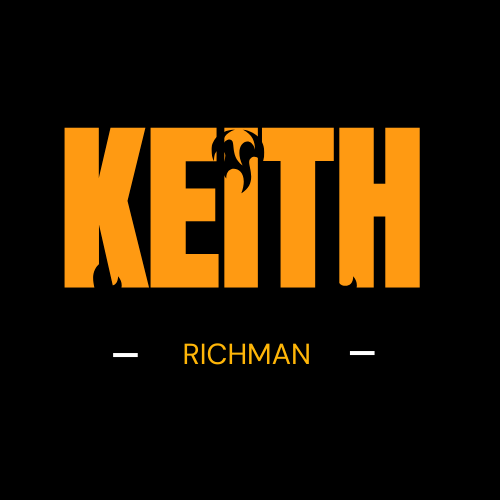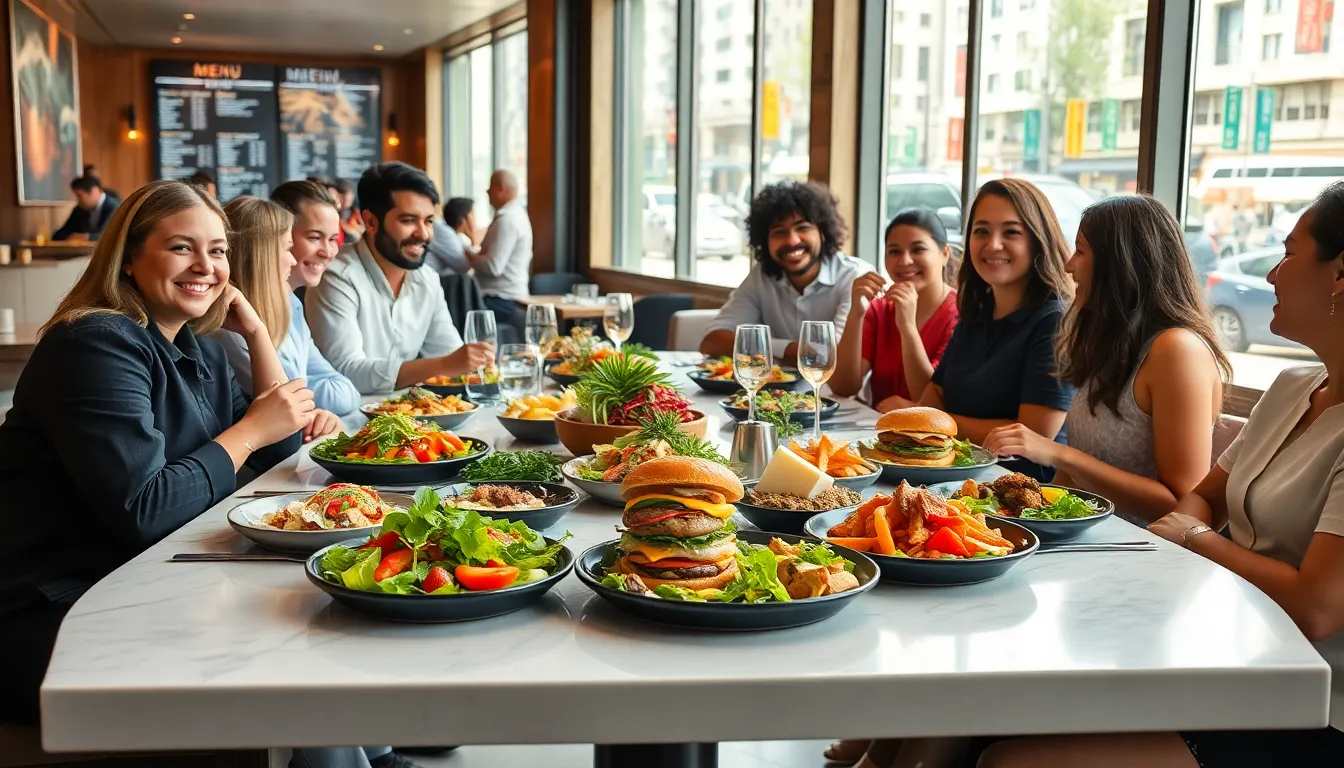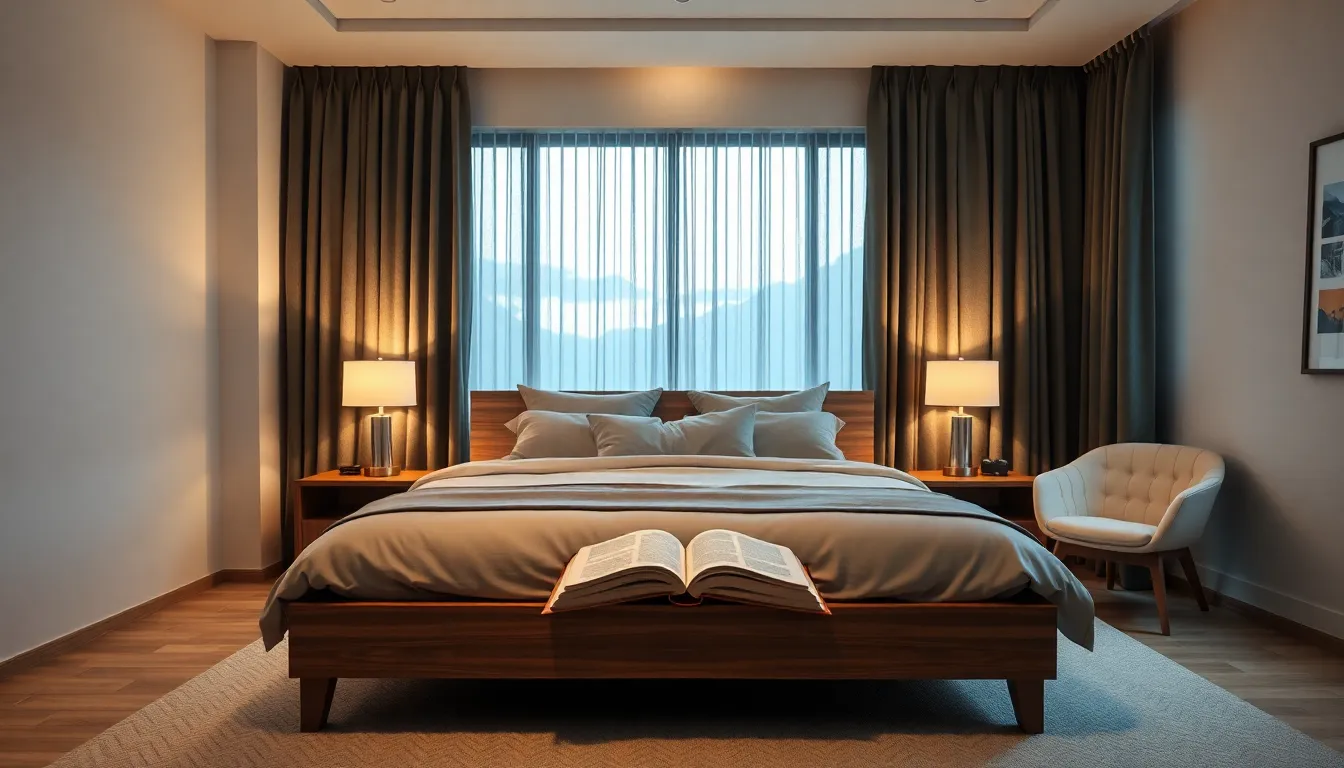Table of Contents
ToggleEver stood in front of your closet, staring blankly at a sea of clothes, wondering how to avoid looking like a walking rainbow? Colorway outfit planning is here to save the day! This stylish strategy helps anyone mix and match hues like a pro, ensuring they step out looking sharp and put together without the hassle.
Understanding Colorway Outfit Planning
Colorway outfit planning simplifies choosing complementary clothing colors. This method enables individuals to create cohesive and stylish looks effortlessly.
What Is Colorway Outfit Planning?
Colorway outfit planning involves selecting a specific palette of colors meant to harmonize within various outfits. This strategy allows for flexibility, making it easy to combine different pieces. Utilizing a defined color scheme streamlines the outfit selection process, reducing stress when getting dressed. By focusing on shades that work well together, people can develop a personal style that feels put together.
Importance of Color Coordination
Color coordination plays a crucial role in overall appearance. It enhances not only the aesthetic appeal but also boosts confidence when wearing outfits. Coordinated colors create visual harmony, allowing individuals to stand out positively. Effective color combinations draw attention to key pieces while complementing one another. Without proper color coordination, outfits can appear mismatched, resulting in an undesired look. Prioritizing colorway planning ensures suitable combinations that reflect personal style.
Key Elements of Colorway Outfit Planning
Understanding key elements of colorway outfit planning sets the foundation for effective style coordination. Incorporating color theory and selecting the right color palettes allows for cohesive outfit choices.
Color Theory Basics
Color theory serves as the backbone of successful outfit planning. Primary colors include red, blue, and yellow, while secondary colors, produced by mixing primary ones, are green, orange, and purple. Tertiary colors result from combining primary and secondary colors, expanding the palette. Complementary colors, located opposite each other on the color wheel, create striking contrasts. Analogous colors, found next to each other, offer harmonious blends. Effective use of these color categories strengthens style choices, making outfits visually appealing.
Choosing the Right Color Palette
Selecting a color palette remains a crucial step in outfit planning. Consider personal preferences, skin tones, and seasonal trends when designing palettes. Neutrals like black, white, and beige form the base of any wardrobe. Choose one or two accent colors to add vibrancy. Earth tones, jewel tones, or pastels define various styles; experimenting with combinations defines personal aesthetics. Balancing bold colors with softer shades ensures outfits remain attractive, keeping the overall look in harmony.
Tips for Effective Colorway Outfit Planning
Effective colorway outfit planning hinges on understanding colors and their interactions. Utilizing well-thought-out strategies enhances style comprehension and enhances coordination.
Leveraging Seasonal Trends
Seasonal trends significantly influence color choices in outfit planning. Spring often invites pastels like lavender and mint, while summer embraces vibrant hues such as coral and turquoise. Autumn tends to favor warm tones like mustard and burgundy, whereas winter showcases richer colors like navy and emerald. Observing these shifts helps individuals select pieces that align with current fashion inclinations. Incorporating seasonal colors not only keeps wardrobes fresh but also adapts to various events and moods throughout the year.
Mixing and Matching Colors
Mixing and matching colors involves skillful balancing of shades and tones. Start by selecting a base color that complements skin tone and can anchor various outfits. Pair this with one or two accent colors that add interest and excitement. Utilizing the color wheel proves beneficial; complementary colors create contrast, and analogous colors ensure harmony. Experimentation plays a vital role in this process. Trying different combinations encourages discovering unique pairings that resonate with personal style, contributing to a cohesive and fashionable look.
Practical Examples of Colorway Outfit Planning
Colorway outfit planning can easily elevate personal style with practical applications in various settings. Below are examples for casual outfits and formal attire.
Casual Outfits
Casual ensembles thrive on relaxed colors and comfortable materials. Pairing a soft beige top with olive green pants creates a mellow yet stylish look, perfect for a weekend outing. For added flair, accessorize with soft pink shoes and a matching belt. Another option includes pairing a light blue denim jacket with a white t-shirt and charcoal joggers. Add accents of mustard yellow through sneakers or a beanie to boost vibrancy without overwhelming the palette. Using neutrals as a foundation, such outfits allow for creativity while maintaining harmony.
Formal Attire
Formal attire benefits from well-thought-out color selections that exude sophistication. A navy blue suit works well with a crisp white shirt, creating a classic combination. Incorporating a deep burgundy tie introduces a striking accent. Alternatively, consider a charcoal dress for women, paired with a cream blazer, offering a chic and polished appearance. Incorporating metallic accessories like gold earrings can enhance the overall look without clashing. Such combinations exemplify how colorway outfit planning ensures a refined yet visually appealing formal experience.
Colorway outfit planning is a powerful tool for anyone looking to elevate their style. By understanding color theory and selecting the right palettes individuals can effortlessly create cohesive and eye-catching outfits. This method not only simplifies the decision-making process but also enhances confidence through well-coordinated looks.
Incorporating seasonal trends and personal preferences allows for a wardrobe that feels fresh and vibrant. With the right mix of neutrals and accent colors individuals can express their unique style while avoiding mismatched outfits. Embracing this approach transforms the way one approaches fashion making every outfit an opportunity to shine.







